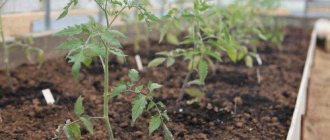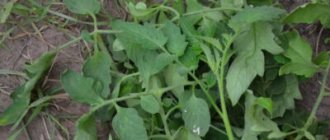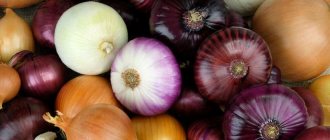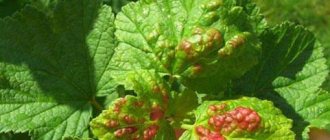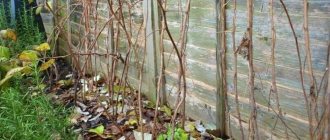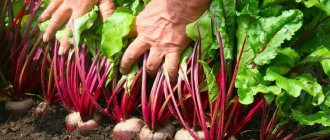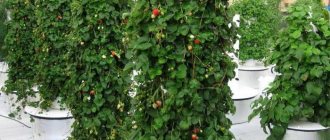This fruit shrub is easy to grow, frost-resistant and, with little effort and care, produces an excellent harvest. After harvesting, plants require care - watering, fertilizing, pruning, protection from diseases and pests, and weed control. At the end of summer and autumn, it is advisable to carry out several agrotechnical treatments on raspberry plantations, which will ensure better overwintering of the plants and ensure an easy start to the growing season in the spring. In this article we will tell you how to care for raspberries after harvesting.
By the end of the growing season, raspberry stems become woody, which is a natural protection against low temperatures. By creating favorable conditions for shrubs at the end of summer and preparing them for the upcoming winter, we not only help the shrubs survive the winter, but also influence the abundance of fruiting and growth vigor in the next season.
Gardeners who have been growing raspberries in their garden for many years know that the number of fruits on a bush depends on timely pruning and protecting the plants from frost.
Depending on whether we want to harvest in summer or autumn, we choose the appropriate variety for cultivation. Summer raspberries bear fruit on last year's shoots at the turn of June and July. Remontant raspberries bear fruit on this year's shoots in late summer and autumn. Both species have the same growing requirements, but their care is slightly different.
Watering
Raspberries are a plant with a shallow root system, so they are quite sensitive to drought. However, she does not like stagnation of water in the soil. After harvest, raspberries continue to need watering. However, the frequency of watering can be reduced. In autumn, if the rainy season arrives, watering is no longer necessary. If the autumn is dry, you should continue to water the plants periodically. Raspberries are watered every week with 20-30 liters of water per bush. Watering is stopped before frost.
The ideal option would be drip irrigation, which allows you to water the bushes fairly evenly without irrigating the leaves, which can lead to the development of fungal diseases. The raspberry root system is located in the top layer of soil, so it is necessary to water it in holes with a diameter of 30-40 cm around the bush.
Throughout the growing season, weeds must be controlled, regularly removing them between bushes and between rows so that raspberries do not compete with them for water and nutrients in the soil.
Common mistakes
When growing raspberries, novice gardeners may make mistakes while caring for them and, as a result, get a poor harvest. The most common mistakes made during care in August after fruiting and harvesting are considered to be the most common.
- Trimming overgrowth with the wrong tool. Scissors, dull pruning shears or a knife will damage the plant.
- Uprooting damages the overall root system.
- The presence of weeds inhibits plant growth, reducing its fertility.
- Acidic soils have a negative effect on shrubs. It is recommended to constantly add deoxidizing components, such as ash.
- Rare weak watering in the absence of rain leads to weakening of the plant and a decrease in the formation of new buds.
- Refusal to fertilize leads to soil depletion. Such soil is not able to fully provide the plant with the necessary substances.
- Growing raspberries in a permanent place for a long time.
By avoiding such mistakes in care, you can easily increase the quantity and quality of the harvest of aromatic berries.
Feeding and fertilizers
Autumn feeding of raspberries is the key to successful wintering: due to the large number of fruits on the shoots and prolonged flowering throughout the season, as well as the formation of new shoots in the spring, care should be taken to strengthen the plants by fertilizing them correctly. The following rules must be observed:
- Nitrogen-containing fertilizers should only be used in spring. Adding nitrogen in summer and fall will affect the excessive development of shoots that will not survive the winter. The plant no longer needs to increase green mass; on the contrary, it needs to prepare for winter, and nitrogen will stimulate the growth of green mass, which is no longer desirable in August.
- In the second half of summer, raspberries need potassium-phosphorus fertilizers and magnesium.
- Natural fertilizers (manure, compost, vermicompost) should be in addition to mineral fertilizers.
In the fall, you can conduct a chemical soil test to determine the nutrient needs of plants. Before the onset of frost, it is worth applying biostimulating fertilizers that accelerate the lignification of shoots and increase the frost resistance of plants (for example, Razormin, fertilizers from the Fertilider and Maximus groups).
Autumn is the best time to apply calcium fertilizers to raspberry plantations. This allows the fertilizer to dissolve and react with the soil to regulate pH and provide the plant with active, easily absorbed calcium for the next season.
In August, you can add potassium sulfate to the soil (1 tsp per 1 sq.m.). Feeding with potassium will accelerate the lignification of young shoots, which is a necessary condition for a good wintering of the plant.
The availability of nutrients in the soil to plants depends on its pH. The pH level of the soil for raspberries should be slightly acidic: pH from 6.0 to 6.5 or neutral.
How to correct soil acidity:
- on light soils it is recommended to use calcium fertilizers in the form of carbonate;
- on medium and heavy soils - fertilizers in the form of oxide (quicklime) or hydroxide (slaked lime).
Autumn liming is best done before the end of October or in the first half of November.
Recently, planting green manure has become popular. Green manure is sown in the fall between raspberry rows and then dug up. This agrotechnical technique allows you to improve the structure of the soil and increase the content of useful elements in it.
How to use green manure -
In autumn, the soil around the plants is usually mulched, for example, with compost, which is a natural protection against frost, drying out of the root system, weed growth and will act as an additional fertilizer.
Mulching with straw
Pruning and preparation for winter
An important agrotechnical technique that significantly affects yield is pruning raspberries. It is necessary to do it correctly, depending on the variety and characteristics of fruiting.
Many novice gardeners make the mistake of not pruning raspberries. They naively believe that unpruned raspberries will bloom profusely and bear fruit beautifully. But the absence of cut shoots always leads to poor yields and low fruiting. Old raspberry shoots will begin to stretch toward the light in late fall and compete for nutrients with nearby bushes. The fruits will be small, there will be few of them, they will not be tasty. This is why fall pruning is so important. Even if the shoots look strong and healthy, it is better to trim them. This will only benefit the bushes.
Pruning is done with sharp garden pruners. After working with diseased bushes, tools must be disinfected to prevent the spread of the disease to healthy bushes. It is undesirable to break out shoots by hand or with your feet, as some novice summer residents practice; this severely injures the plant and impairs the healing of wounds, which can become a gateway to infection.
After pruning, shoots should be removed from the area. Pruning and removing shoots from plantations is an important procedure that limits the appearance of raspberry leaf midges, which form growths on shoots with the overwintering larvae of this pest. Before winter, it is also worth mowing the turf between the rows.
For non-repairing varieties
Raspberries are pruned after harvest. The plant no longer needs extra shoots; it needs to start preparing for winter. Shoots that bear fruit this year in the fall need to be cut off at the root. All diseased shoots are cut off at the root, and if necessary, diseased bushes are cut off completely.
You can also remove all weak young shoots that will freeze in winter before they have time to become lignified. Thus, by lightening the plantings, we will improve the ripening and lignification of the remaining strong shoots. If leaves remain on the shoots, remove them and clean the shoots of any remaining leaves.
The remaining shoots should be pliable, it will be easier to secure them by bending them to the ground and tying them. Spread dry tree leaves and straw on the shoots bent to the ground, cover them with agrofibre for the winter. In regions with heavy snowfall, snow will be a natural protection. Additional protection of shoots may not be necessary, but it can be done preventatively.
In exceptionally cold regions of the country, you can combine several protective materials, for example, covering the shoots with leaves, then with straw and covering them with agrofibre on top. If we do not want to bend the shoots to the ground, we can tie them together and cover them with a bag, and lay a layer of mulch and straw around the roots. The thickness of the mulch layer should be at least 15-20 centimeters to completely protect the roots.
Some gardeners use the following technique - trimming the tops of young shoots. This pruning causes the shoots to branch in the current year, which ultimately causes an increase in raspberry yields next year.
Raspberries, which bear fruit only on two-year-old shoots, are usually grown on a trellis in the form of a single row with a structure of stakes and wire. After harvesting the fruits, all two-year-old shoots are cut off, and the number of remaining one-year-old shoots depends on the row formation system. Young shoots are tied to a trellis, spreading them well.
You can prune raspberry shoots in the spring, but, according to some gardeners, spring pruning can delay flowering and fruit ripening.
In addition to the timing of pruning, it is worth remembering the appropriate cutting height - pruning too high will cause shoots to grow from the remaining two-year-old part, which can trigger flowering and fruit set in the lower part of the raspberry in July. This date may interfere with treatments against gray mold carried out during the flowering period.
For remontant varieties
Remontant raspberries can be pruned in two ways:
- Trim all remontant raspberry shoots directly above the ground after fruiting in late fall (late November) or very early spring (March-April). The plant begins its growing season in the spring and then bears fruit in late summer and autumn.
- According to the second method, some of the shoots are cut off at the root, and some are left, cut only halfway. On these shoots, raspberries begin to bear fruit much earlier, so we can extend the fruiting period of remontant raspberries.
Remontant raspberries grown for the fall harvest are usually grown without a trellis, although many use wooden poles with string attached to them to prevent fruit shoots from falling into the rows. This makes the berries better exposed to sunlight and easier to pick. In the fall, after picking raspberries, you need to remove the garter ropes before pruning the shoots.
Treatment against diseases and pests
At the end of summer, it is necessary to continue systematic inspections of plantings for the presence of diseases and pests and, if detected, immediately deal with them.
For preventive purposes, the following measures should be taken:
- Systematic inspections of bushes.
- Gently water with cold water into the holes around the bushes, without irrigating the green part.
- Weed control.
- Removing fallen leaves, pruned or broken, dry, diseased shoots. Diseased plant residues must be burned; raspberry weevils and other pests can overwinter in them, as well as fungal spores and viral diseases.
- It is necessary to thin out the plantation, regularly remove thickets of wild raspberries, they can become a source of raspberry mosaic virus or chlorosis.
What raspberry treatments are carried out in the fall, after harvesting:
- Treatment with Bordeaux mixture against anthracnose and all spots. Use a 1% solution of Bordeaux mixture or its substitutes.
- If the raspberry tree is heavily infested with spider mites, sawflies, and gall midges, spray with Zolon (20 g of the drug per 10 liters of water).
After treatment with preparations and removal of plant residues, it is necessary to carry out autumn digging of the soil under the bushes and deeper digging between the rows in order to destroy pests overwintering in the soil.
What work needs to be done in the raspberry field in August?
Raspberries are considered an unpretentious crop, resistant to various negative factors. However, high-quality, timely care allows her to spend all her energy on creating a harvest, rather than fighting for survival. Care in August should be as follows:
- feeding;
- pruning old shoots;
- treatment against diseases and pests;
- watering.
Following simple rules of care will allow the raspberries to form well and prepare for future fruiting.
Transfer
In some cases, it is necessary to replant the bushes. Raspberries can be transplanted after harvesting - in August and September.
The progress of work is as follows:
- Soil preparation on the site begins 3 months before planting. The area needs to be dug up, weeds carefully selected, and rotted manure or compost added to the digging. If there are a lot of harmful weeds on the site, such as wheatgrass, then you may have to remove them chemically using products like Roundup. But such treatments are carried out long before planting; the timing must be checked in the instructions for the drug.
- Superphosphate is added to poor soil at a dose of 100 g / 10 m² and potassium sulfate at a dose of 200 g / 10 m².
- If necessary, you need to adjust the acidity level of the soil; raspberries love slightly acidic soils. If the soil is alkaline, acidic peat should be added.
- The plants are carefully dug up, the root system is examined, and diseased, dry roots are removed. Seedlings are pruned to a height of 60 cm.
- In the treated area, they dig holes 40 cm deep. It is advisable to place the rows of raspberries from north to south, this will ensure good lighting of the bushes on both sides at different times of the day. A little fertile soil is poured into the holes, the seedlings are placed vertically, carefully straightening the roots. When planting, it is important to leave the root collar of the plant above the ground.
- Fill the hole with a soil mixture consisting of garden soil, sand, and peat.
- Compact the soil, make a hole to prevent water from draining, and water the plantings.
- If necessary (if the varieties are vigorous), you can install support posts or a trellis.
- After planting, it is important to regularly water the established plantation so that it takes root well.
Care according to the lunar calendar
In August 2022, caring for raspberries according to the lunar calendar includes the following phases:
| Phase, according to August dates | Recommended activities |
| 1–7 Waning Moon | Work aimed at caring for the root system - fertilizing, loosening the soil, replanting bushes. |
| 8 New Moon | – |
| 9–21 Waxing Moon | Trimming |
| 22 Full Moon | – |
| 23–31 Waning Moon | Fertilizing, loosening the soil, replanting bushes. |
So, after picking the berries, you also need to take care of the raspberries. It is important to trim shoots and leaves in a timely manner, which may subsequently affect the harvest next year, but, above all, the resistance of plants to frost. It is also important to continue to water the plants, feed them properly and prepare them for wintering.
Answers to frequently asked questions
Answers to questions that young gardeners may have will allow them to care for raspberries without mistakes and make it easier to get a good harvest.
What determines the degree of sweetness of raspberries?
Answer: The sweetness of berries depends primarily on the variety. Secondly, it depends on the growing conditions. Sufficient lighting, watering and fertilizing improve the taste of the crop.
Do all young growth need to be removed in August?
Answer: Yes, young thin shoots will not grow and become woody until the cold weather, but they take enough strength and nutrition from the bush. Therefore, the growth must be removed regularly.
What is better to cut out old branches, with a knife or pruning shears?
Answer: The main thing is to cut the raspberries with a sharp tool; it is more convenient to do this with pruning shears.
What is the best way to feed raspberries in August?
Answer: raspberries need additional nutrition after fruiting. In August, it is advisable to apply fertilizers containing nitrogen, potassium and phosphorus.
Why do they cut off the top of the shoots?
Answer : By cutting off the top part, the gardener provokes the branching process. The more branches formed by winter, the more ovaries there will be.
